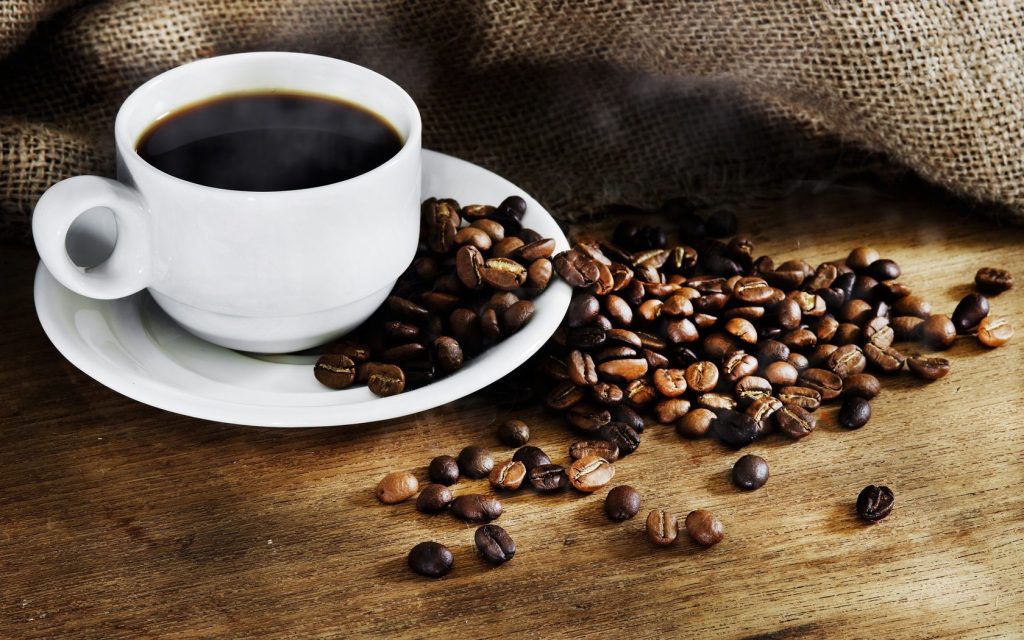

Many people around the world start their morning with a cup of coffee… or more. Sometimes, the coffee tastes incredible, while at other times, you might chug it down just because you want to stay awake. You might think great tasting coffee lies solely in the preparation, with some baristas brewing delicious coffee, while others do not. However, more is involved in the quality of your brew and the flavor than just the preparation.
What makes coffee taste great? Where does coffee grow, actually? One of the essential factors that affect the taste of coffee is the origin. The origin of your coffee will play a significant factor in the quality and flavor of the brew. The taste of coffee is affected by factors like the type of the plant, the chemical composition of the soil, the weather it is grown in, the amount of rain and sunshine it gets, and even the height at which it is produced. The time and way it is harvested also affect the taste of your coffee. Ripe coffee beans will taste better than unripe coffee beans. If the coffee is harvested using machines, it might pluck immature coffee beans along with the mature. Handpicked coffee harvesting is more tedious, but the workers pick only the ripe coffee beans.
You can see that that great-tasting cup of coffee involves so many processes and is reliant on several variables before it arrives in your cup. Coffee is grown in many countries around the world. In this post, we will consider some of these countries and the type of coffee they produce. We will discuss the essential conditions necessary for the growth of coffee, the means of cultivation, the best kind of coffee, and much more. So, come with us as we take a trip around the world, visiting the remarkable plant responsible for the substance that keeps us awake and active throughout the day

All coffee can trace its heritage back hundreds of years to Africa, specifically the coffee forests on the Ethiopian plateau. According to legend, a goat herder named Kaldi first discovered this plant. It is reported that he was drawn to the plant after he noticed that after his goats ate the fruits from a particular tree, they became so active that they didn’t sleep through the night. A brew was made of these berries, and the knowledge of this drink began to spread.
The cultivation of coffee and commercialization began on the Arabian Peninsula, and by the 15th century, these beans were grown in Arabia and later in the 16th century known in faraway Egypt, Turkey, Persia, and Syria. It was a staple of many homes, and even today, coffee houses abound in these areas.
European travelers to the Near East brought back these remarkable beans, and thus it made its way to Europe. At first, it was met with suspicion and distrust, with some referring to it as “the bitter invention of Satan.” Despite the controversy, coffee found its way to the hearts of Europeans, and coffee houses sprang up in several popular cities in Europe. By the mid-17th century, there were more than 300 coffee houses in London alone.
By the 18th century, coffee had become one of the most profitable export crops in the world. Today, after crude oil, it is the most popular and demanded commodity across the globe.
Coffee cultivation is usually done in large commercial quantities. Thus, it is no surprise that there are several steps required to cultivate this crop successfully. The coffee plant is an evergreen shrub or small tree that is of African origin. The shrub produces seeds, often referred to as beans, which are roasted, ground . and then sold for brewing coffee.
There are two main types of commercial coffee. There is the Arabica species, which is mostly cultivated in Latin America, and there is the Robusta species grown mainly in Africa. Some regions can grow the two species successfully. For example, both Robusta and Arabica can be found in India, Indonesia, and some other Asian countries.

A favorable climate is essential for coffee to grow. Some of the most important climatic factors are sunshine and rainfall. If the temperature of an area is around 32 degrees Fahrenheit, then the coffee will not survive. The best temperatures for growing coffee lie between 73° and 82° F. Rainfall must lie between 60 to 80 inches per year. For the Arabica, there is a required dry period of two to three months to achieve optimum results. For regions that have less than this amount of rainfall, irrigation is needed.
The planting area is usually set in forests, with the shrubs planted in spaced rows. Before they are planted in the field, seedlings are raised in nurseries and are planted in the rainy season.
From blooming to maturation, you have a period of around seven months (Arabica) and around nine months (Robusta).
Countries that grow coffee and the types of coffee they produce
More than 50 countries around the world grow coffee. They include:
The islands of Hawaii have a fertile soil and a tropical climate that makes them an excellent place to grow coffee. Thus, coffee farms can be found all through these islands. There are several types of coffee found on these islands, but the most popular type is Kona coffee.
You can find coffee plantations on the fertile slopes of Mauna Lao volcano. The active volcano is home to dark, fertile volcanic soil, and you will find several young trees planted here. The trees are protected from intense sunshine by the tropical clouds in the sky, and the rains provide enough moisture.
Coffee is one of the main exports of Mexico. The country might not have large coffee plantations, but with over 100,000 coffee farmers, small coffee farms abound in the country. Mexican coffee is rich in taste and aroma, featuring a certain sharpness. Coffee grown in the high peaks of the country is known as Altura.
The coffee grown in the country has a distinctively rich flavor. It is an excellent growing region as it has fertile, dark volcanic soil. Most of the coffee trees here are found at high altitudes; hence, the coffee has a spicy, almost chocolaty taste.
 Costa Rica
Costa RicaCosta Rica grows only wet-processed Arabica coffee. The coffee found here has a medium body but a sharp acidity. The coffee is usually grown on small farms located across the country. After the harvest, the plucked fruits are taken to modern processing facilities to be wet-processed.
If you are a coffee aficionado, then you’d know that Columbia is one of the most famous coffee exporters. It is the second-largest producer of coffee in the world. The coffee is of an excellent standard and carefully grown to reach impressive standards. The landscape is perfect for coffee cultivation, although transportation to production and shipment centers is hard due to the terrain.
This is the largest producer of coffee in the world. Coffee makes up a large chunk of the economic drivers in this country. This country produces Robusta and Arabica coffee since the climate, soil, and altitude allows either species to be grown.
Indonesia is composed of thousands of islands. Several of the larger islands, for example, Java and Sumatra,, are famous for high-quality coffee.
These islands are made up of small pockets of coffee farms. Most of the coffee produced here is dry processed. Indonesia is one of the largest producers of coffee in the whole world. Indonesian coffees are usually rich, full-body, and mildly acidic.
One unique thing found in Indonesia is the fine aged coffees. Farmers held these coffees for a long time as they wanted to sell them at a higher price. The coffee is kept in warehouses, which ages the coffee and produces a less acidic but deeper flavored brew.
There’s no mentioning coffee without referring to the reported origin of the plant. A visit to the country is enough to convince of this claim. In Ethiopia, wild coffee tree forests are still the primary harvesting source. Ethiopian coffee tends to be remarkable, full-flavored, a bit down-to-earth, and full-bodied.
Other coffee-producing countries are listed in the table below. The table shows the top 10 producers of coffee as of 2018.
| Country | 60-Kg Bags | Metric Tons | Pounds |
| Brazil | 44,200,000 | 2,592,000 | 5,714,381,000 |
| Vietnam | 27,500,000 | 1,650,000 | 3,637,627,000 |
| Columbia | 13,500,000 | 810,000 | 1,785,744,000 |
| Indonesia | 11,000,000 | 660,000 | 1,455,050,000 |
| Ethiopia | 6,400,000 | 384,000 | 846,575,000 |
| Honduras | 5,800,000 | 348,000 | 767,208,000 |
| India | 5,800,000 | 348,000 | 767,208,000 |
| Uganda | 4,800,000 | 288,000 | 634,931,000 |
| Mexico | 3,900,000 | 234,000 | 515,881,000 |
| Guatemala | 3,400,000 | 204,000 | 449,743,000 |
Like the coffee bean, the flavor of your cup of coffee starts from the shrub. According to some, the quality of coffee is its highest when on the tree, and all other processing, whether dry-processing or wet-processing is all in a bid to preserve the quality. Coffee is grown all over the world, as long as the climate and other conditions are right. Although there are over 100 different species of coffee, Robusta and Arabica are the only commercially relevant types; and either of them is what you find in your morning cup of coffee.
Ripe beans are better than unripe coffee beans. The stage at which the coffee is harvested is another factor that will affect how great your coffee will taste. We hope you have gained an insight into the intricacies and production of your favorite drink. There is so much work involved in getting that delicious cup into your hands!





